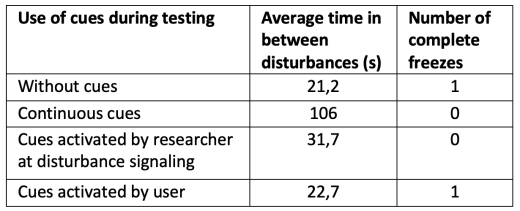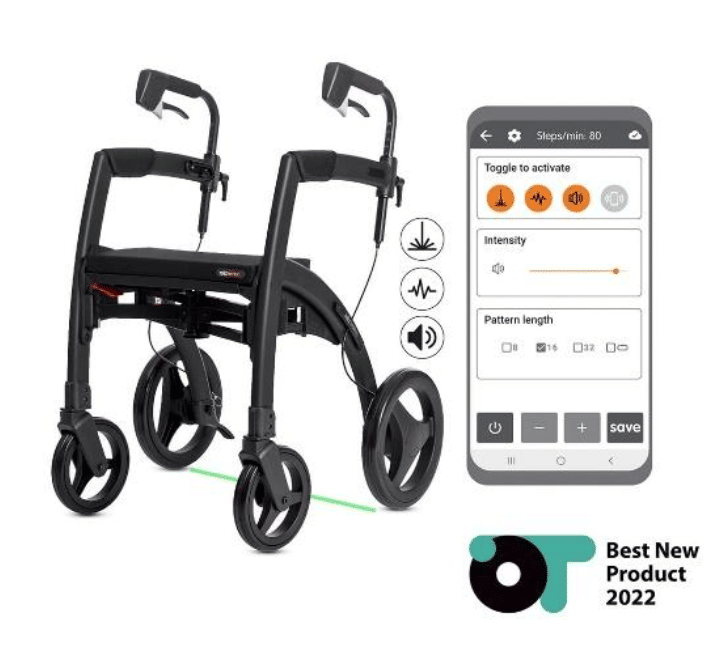A common symptom of Parkinson’s disease is a disruption of the walking pattern, also known as ‘freezing of gait’. With freezing of gait, the forward movement of a patient is blocked causing sudden imbalance, leading to an increased risk of falling. This freezing can occur when starting to walk, while making a turn, when walking through a door frame, or can be caused by stress. However, with conscious effort, it is possible for the patient to suppress symptoms like freezing and perform voluntary movements. It is challenging, though, to stay focused on a task that is usually performed subconsciously.
External stimuli can help to direct the focus (back) on the movement and regain or maintain balance. Cues can be visual (laser line on the floor), auditory (metronome) or haptic (rhythmic vibrations). All these forms of cues are implemented in the Rhythm (prototype) module that can be attached to the Rollz Motion. To prove the effectiveness of this module on freezing, the gait pattern was measured and compared to walking with and without cues.
Try-out with Parkinson’s patient
A prototype was made by attaching the Rhythm module and several sensors to a regular Rollz Motion rollator. Walking speed was measured by a speed sensor at one of the wheels. 4 ‘time of flight’ sensors below the seat of the Rollz Motion Rhythm, measured the distance from the legs to the rollator, from which walking parameters like step frequency and size were distracted.
For this trial, one Parkinson’s patient with freezing of gait occurring in stressful situations, was first asked to walk back and forth on the pavement between gates of pawns placed 10 metres apart. Just before the subject reached a pawn, the researcher indicated which way the subject should turn to make the turn. The test subject then started walking short laps that consisted of walking 10 m on the pavement, then crossing the road, walking around a pole and then immediately crossing the road again and walking another 10 m on the pavement to end at the starting point. Both tests were repeated twice, once without the cues and once with all the cues on. The changes in walking direction and underground were built in to create a stressful situation and increase the likelihood of freezing.


Results
Differences could be observed between the different tests. In the tests where no cues were used, the gait could be described as restless, irregular and jerky. Even at the times when no freezing occurred, these characteristics were visible. These characteristics changed when the Rhythm module was put into use and the test participant started to actively focus on the rhythm indicated by the cues. The walking pattern immediately became more constant, stable and calm. The measurement data show unequivocal results. Not only did the number of freeze moments decrease, the variation in step size, and in step duration also decreased.
